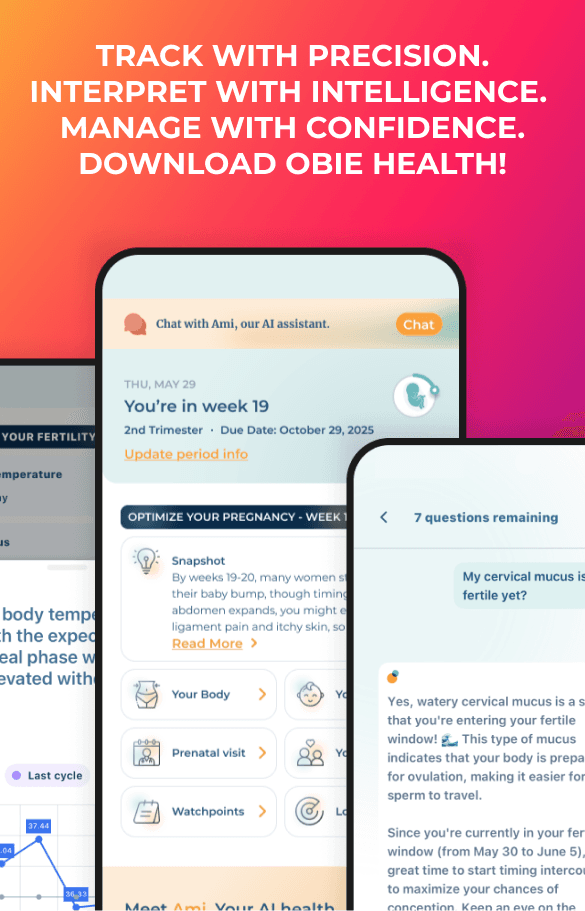Postpartum Pain: Managing Perineal Trauma and C-Section Recovery
Obie Editorial Team

Giving birth is a physically intense process, and postpartum pain is a common reality for many new mothers. Whether recovering from vaginal delivery with perineal trauma or healing from a cesarean section, understanding pain management strategies can help you feel more comfortable during recovery.
Common Sources of Postpartum Pain
- Perineal Trauma & Stitches: Tearing or an episiotomy during vaginal birth can cause soreness, swelling, and discomfort while sitting or urinating.
- C-Section Incision: A surgical birth involves an abdominal incision, leading to tenderness, restricted movement, and healing discomfort.
- Afterpains: Uterine contractions as the uterus shrinks back to its original size can cause cramping, especially during breastfeeding.
Pain Management Strategies
- Cold Therapy: Applying ice packs to the perineal area can help reduce swelling and discomfort in the first few days.
- Sitz Baths: Warm water soaks can promote healing and provide relief for vaginal soreness.
- Supportive Abdominal Binding: For C-section recovery, using a postpartum belly binder can help support the abdominal muscles and reduce strain.
- Pain Medication: Over-the-counter pain relievers like ibuprofen or acetaminophen are often recommended, but always check with your provider.
- Gentle Movement: Walking can aid circulation, prevent blood clots, and support healing while reducing stiffness.
Healing takes time, and it’s important to listen to your body. If you experience excessive pain, signs of infection, or prolonged discomfort, contact your healthcare provider.
Source:
Leeman, L., et al. (2019). Healing after vaginal birth: Recovery of perineal trauma. American Journal of Obstetrics & Gynecology.









